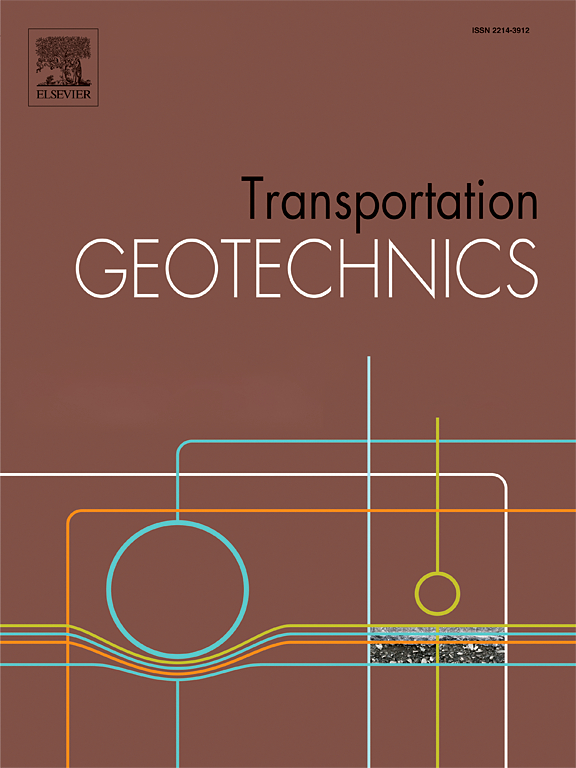Experimental Study on the Dynamic Responses of Subgrade and Foundation of High-Speed Railway Crossing Ground Fissure Zone
IF 4.9
2区 工程技术
Q1 ENGINEERING, CIVIL
引用次数: 0
Abstract
Ground fissures are widely distributed in China, as a geological hazard that can aggravate overall deformation of subgrade and foundation of high-speed railways and seriously affect the construction, operation, and maintenance. To reveal the impact of ground fissures, a physical model test of dynamic responses of subgrade and foundation of high-speed railway was conducted. The variation of dynamic responses of CFG (cement, flying-ash, and gravel) piles, foundation, and subgrade at different train speeds are studied, with the differences of dynamic responses of natural and composite foundations. The results show that the dynamic amplification effect of hanging wall is significant than that of footwall under the action of train vibration load, due to the asymmetric distribution of inclined strata in the ground fissure site. Because of different capacities to scatter and absorb dynamic waves, the attenuation rate of the dynamic responses in the subgrade is greater than that of foundation, resulting in dynamic stress and acceleration attenuation of about 85 % and 53 % in the embankment, respectively. Moreover, there is a linear relationship between the influence depth of dynamic stress and the train speed, which of the hanging wall and footwall are respectively 10.8 m and 9.8 m at the train speed of 250 km/h. The amplification factor of soil between piles near the ground fissure is greater than that of pile heads, due to the greater stiffness of the CFG piles. The dynamic strain amplitudes of piles decrease with the increase of depth, and are basically symmetrical about the central axis along the transverse direction of the subgrade. The amplitudes of dynamic responses in natural foundation are greater than that in composite foundation due to the reinforcement effect of CFG piles, and the attenuation rates are less than those of the composite foundation along the depth direction.
求助全文
约1分钟内获得全文
求助全文
来源期刊

Transportation Geotechnics
Social Sciences-Transportation
CiteScore
8.10
自引率
11.30%
发文量
194
审稿时长
51 days
期刊介绍:
Transportation Geotechnics is a journal dedicated to publishing high-quality, theoretical, and applied papers that cover all facets of geotechnics for transportation infrastructure such as roads, highways, railways, underground railways, airfields, and waterways. The journal places a special emphasis on case studies that present original work relevant to the sustainable construction of transportation infrastructure. The scope of topics it addresses includes the geotechnical properties of geomaterials for sustainable and rational design and construction, the behavior of compacted and stabilized geomaterials, the use of geosynthetics and reinforcement in constructed layers and interlayers, ground improvement and slope stability for transportation infrastructures, compaction technology and management, maintenance technology, the impact of climate, embankments for highways and high-speed trains, transition zones, dredging, underwater geotechnics for infrastructure purposes, and the modeling of multi-layered structures and supporting ground under dynamic and repeated loads.
 求助内容:
求助内容: 应助结果提醒方式:
应助结果提醒方式:


